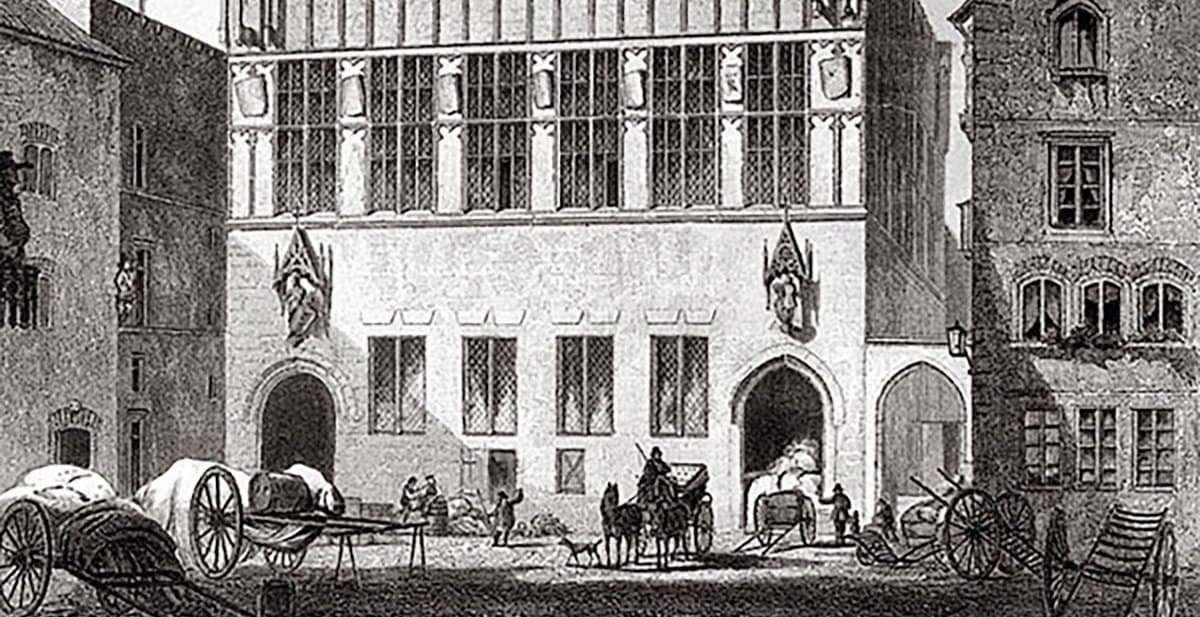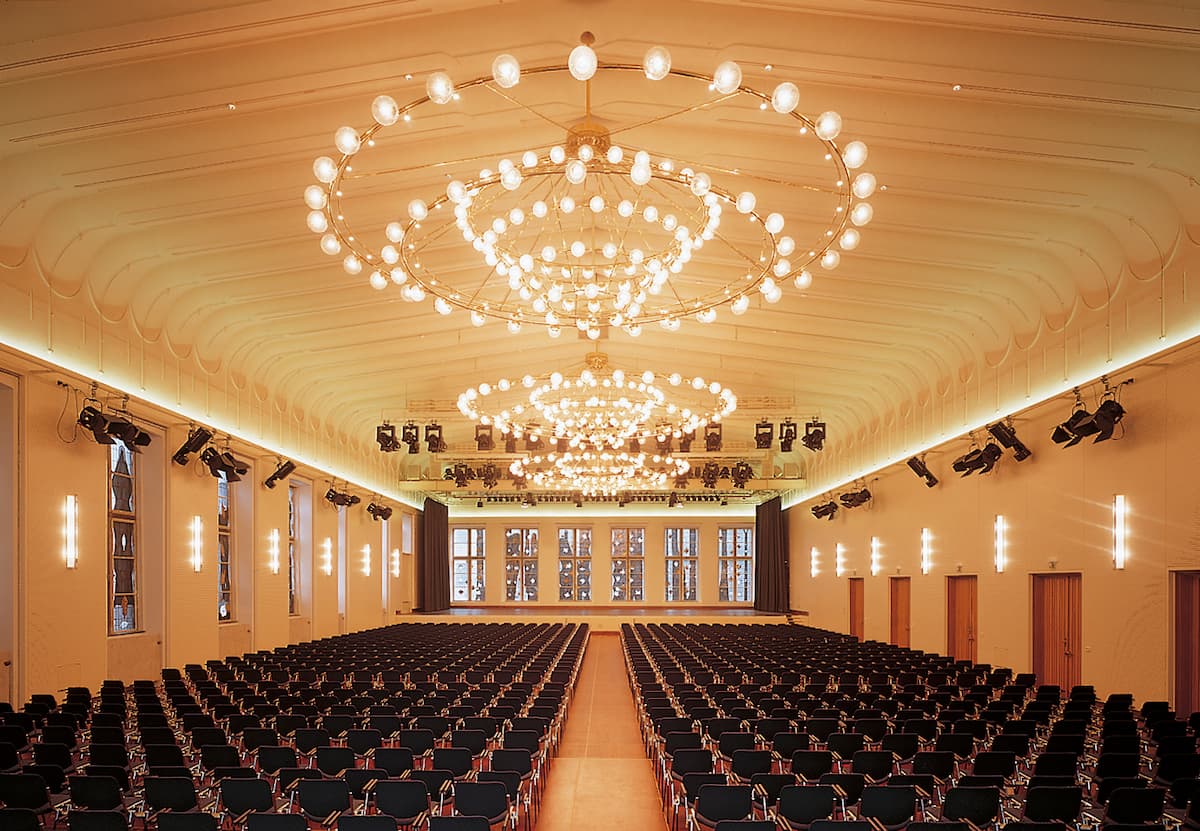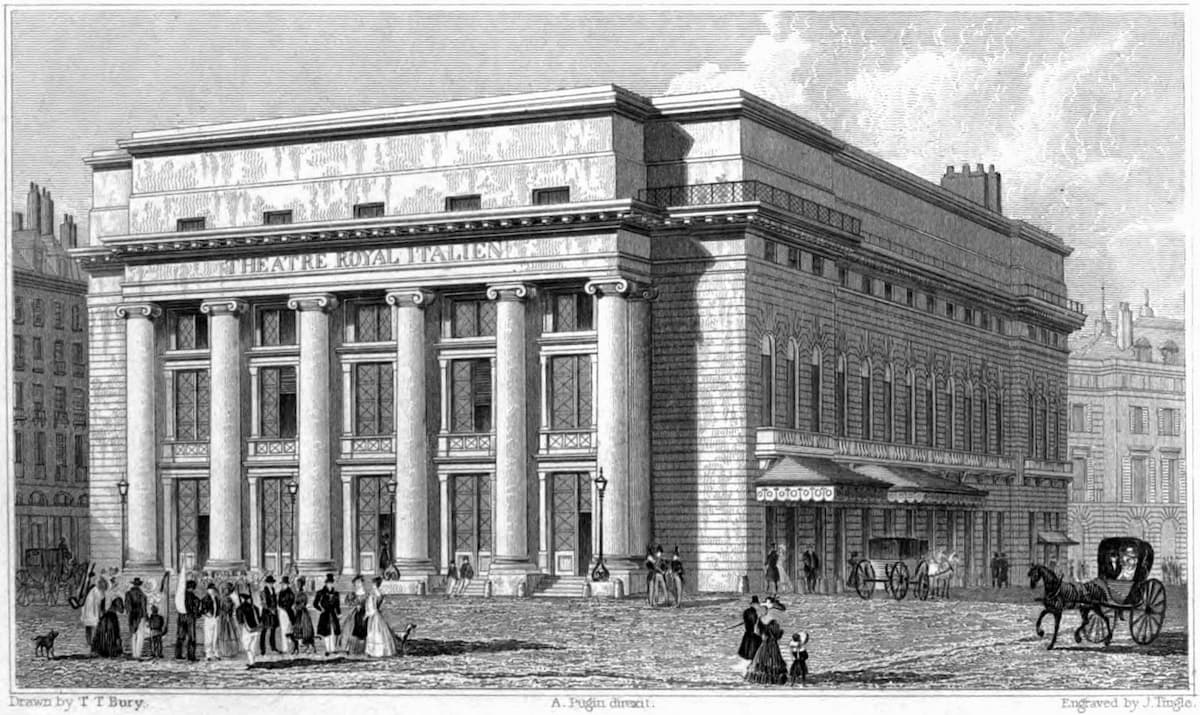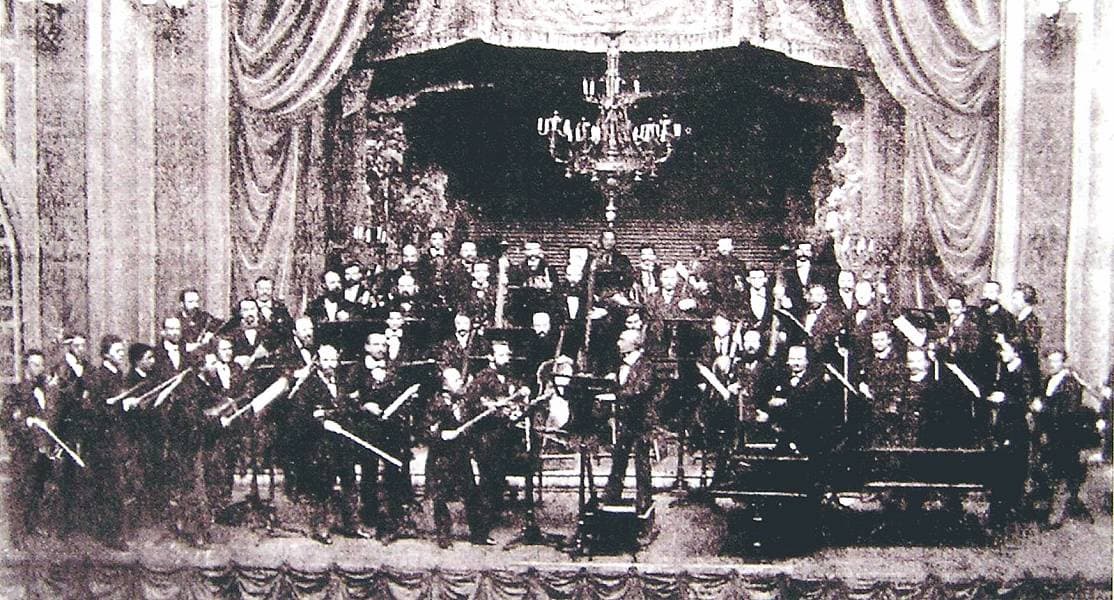The Gürzenich family tree goes back to the Middle Ages, and a castle and village by that name is already mentioned in 1232. Part of the knightly nobility, the family settled in the district of North-Rhine-Westphalia and acquired property in and around the city of Cologne. By 1441 they decided to erect a hall building in late gothic style, and hired Johann von Bueren, who was known simply as “the stonemason” in Cologne. In six years he created a building with twin roofs using stone from a nearby quarry. From the very beginning, the building was used as a municipal festival and dance hall, and guests of honor were received in the grand ballroom.

Gürzenich in Cologne © Koelncongress GmbH
The Gürzenich welcomed such luminaries as emperors Friedrich II, Maximilian I, and Charles V. For over three centuries, the “Gürzenich” was the talk of the town, however, by the 17th century the fortunes of the family waned. From about 1645, the building was used as a department store and it took until the 1820s before it once again became Cologne’s most important event location. Karl Marx proclaimed the “Manifesto of the Communist Party” in that particular hall on 6 May 1849, and Johannes Brahms conducted the world premiere of his Double Concerto on 18 October 1887 in that location as well.
Johannes Brahms: Concerto for Violin and Orchestra, Op. 102
By 1851 the Gürzenich was in dire need of expansion. Adjacent properties, including a church, were purchased and the city master builder Julius Carl Raschdorff created an elaborate conglomerate building in neo-Gothic style. The late Gothic dance hall, sadly, had to make way for a historicist ballroom. The city council decided to create a mural depicting the history of Cologne, and various painters created a 53-meter ballroom frieze. The Gürzenich Orchestra Cologne had been founded in 1827, but it took up residence at the Gürzenich in 1857. The musical direction fell into the hands of such exception musicians such as Conradin Kreutzer, Heinrich Dorn, Ferdinand Hiller, and Fritz Steinbach. The orchestra quickly established itself as one of the premier ensembles in Europe, and the Cologne Concert Society held its annual concert series in the Gürzenich. Composers appreciated the qualities of the orchestra and of the performing venue, and happily entrusted Cologne with world premiere performances. Among them was Richard Strauss, whose Till Eulenspiegel first sounded at the Gürzenich on 5 November 1895.
Richard Strauss: Till Eulenspiegel’s Merry Pranks, Op. 28
After some serious reconstruction, the Cologne Stock Exchange had moved to the ground floor of the Gürzenich complex in 1875. Nevertheless, the composers/conductors kept coming. On 18 October 1904, Gustav Mahler himself conducted the première performance of his Symphony No. 5 at the Gürzenich. The orchestra had already performed the world premiere of Mahler’s No. 3 in Krefeld, but this time they gathered in Cologne. Mahler had considered various potential cities for the premiere of his 5th, but dismissed each of them for various reasons.

© Koelncongress GmbH
Leipzig had no experience in playing Mahler, and it was said that the “Berlin Philharmonic” wanted the premiere at any price. In the end, he decided on Cologne and the regular conductor was running preparatory rehearsals before Mahler’s arrival. He reported that “The first two movements were difficult to play, but the last two seem to catch on even by the unprepared listener.” Mahler was seriously worried about press reactions, and he urged friendly critics in Vienna and part of Germany to attend. In the event, reception was not favorable prompting Mahler to declare, “nobody understood it. I wish I could conduct the first performance fifty years after my death.”
Gustav Mahler: Symphony No. 5 in C-Sharp Minor (New York Philharmonic Orchestra; Bruno Walter, cond.)

Gürzenich – Grand Hall © Wikipedia
Max Reger wrote his Variations and Fugue on a Theme by Hiller in 1907. The work was dedicated to the conductor of the Cologne Orchestra Fritz Steinbach, and given at the Gürzenich on 15 October 1907. That particular world premiere sounded in a concert dedicated to the memory of Joseph Joachim, who has died exactly 2 months earlier. Sadly, during the Second World War the Gürzenich was almost completely destroyed, but rebuilt under the direction of architect Rudolf Schwarz between 1952 and 1955. Various design upgrades and modernizations were carried out, and the Gürzenich and the adjacent ruins of the church of St. Alban now form an inseparable unit. The Gürzenich Orchestra moved to the newly constructed Kölner Philharmonie in 1986, and another set of restorations took place at the Gürzenich. For one, an external glass elevator was installed, and the so-called “4th Gürzenich” reopened in September 1997.
For more of the best in classical music, sign up for our E-Newsletter
Max Reger: Variations and Fugue on a Theme by Hiller, Op. 100 (New Zealand Symphony Orchestra; Franz-Paul Decker, cond.)




